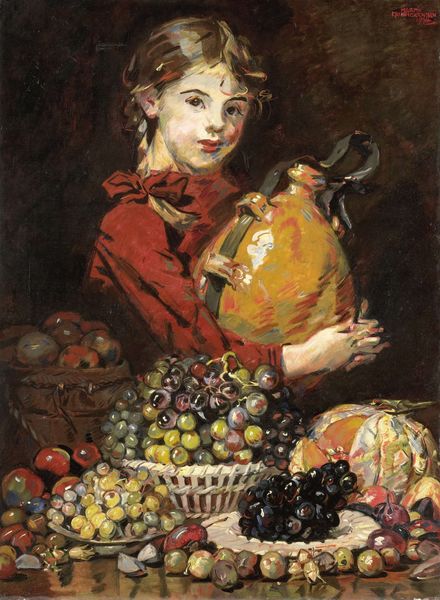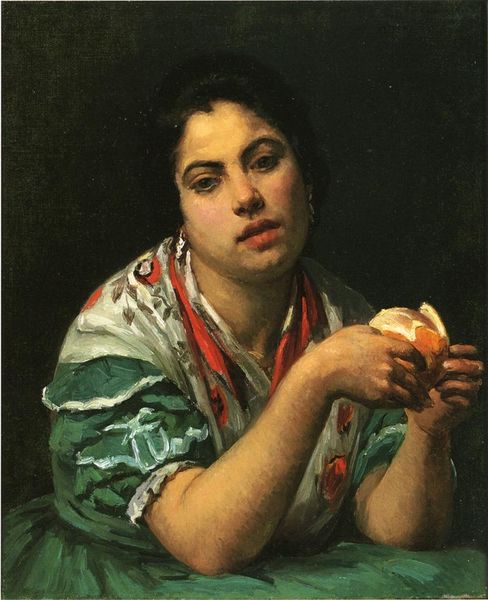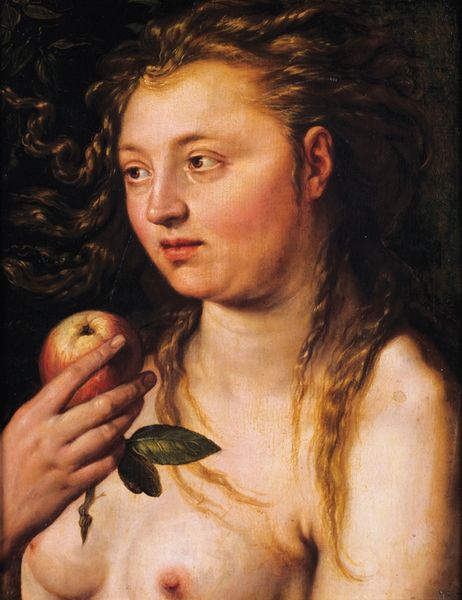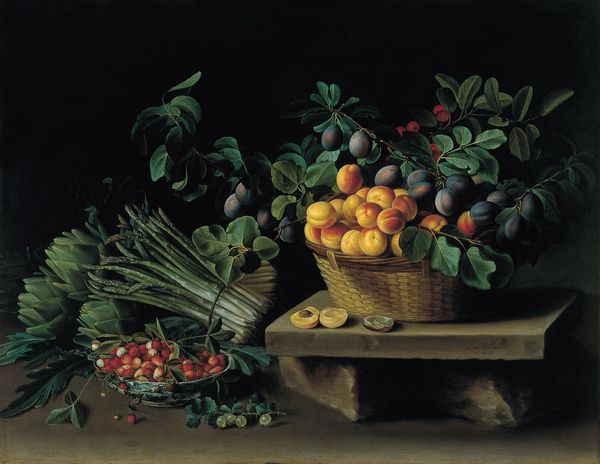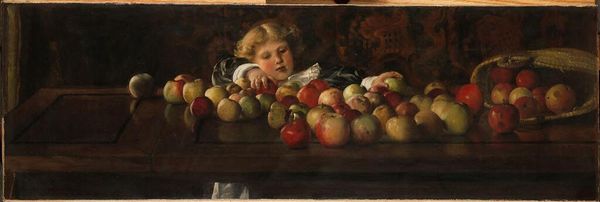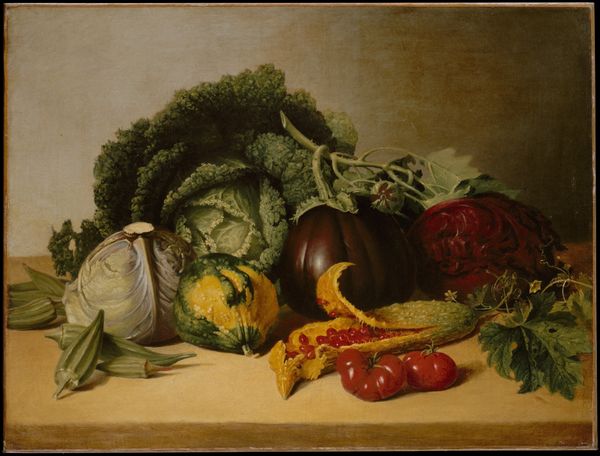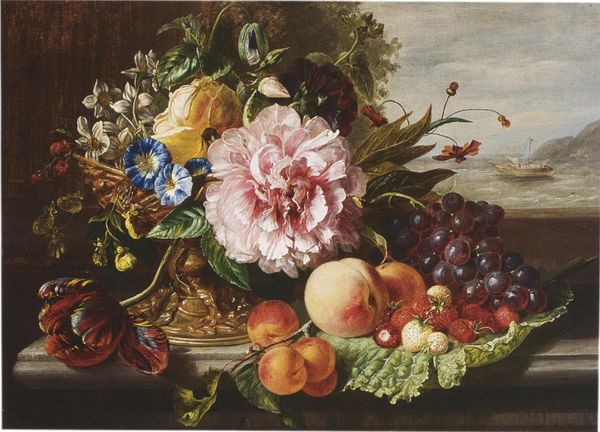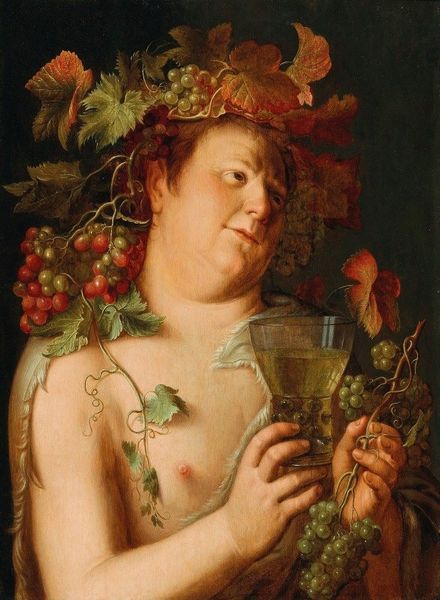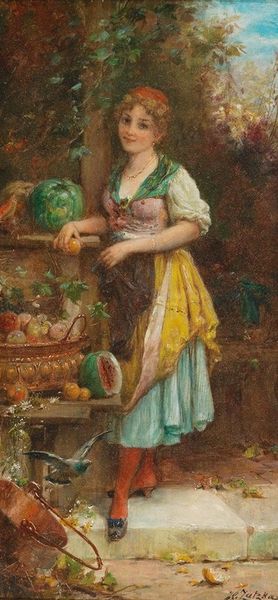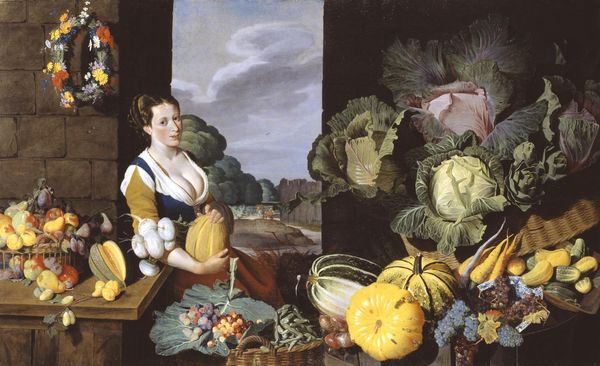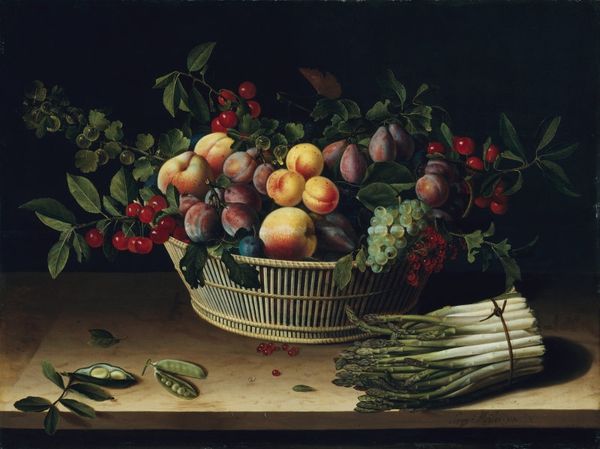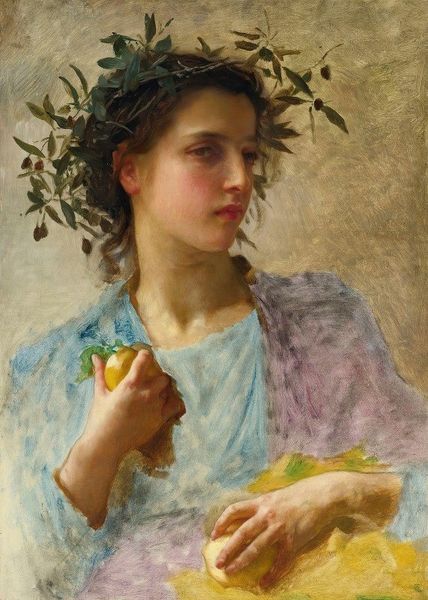
#
portrait
#
portrait reference
#
male-portraits
#
portrait head and shoulder
#
plant
#
animal portrait
#
animal drawing portrait
#
portrait drawing
#
facial portrait
#
lady
#
portrait art
#
fine art portrait
#
celebrity portrait
#
digital portrait
Dimensions: 70 x 67 cm
Copyright: Public domain
Curator: Caravaggio's "Boy with a Basket of Fruit," painted in 1593 and now residing in the Borghese Gallery in Rome, presents a fascinating confluence of realism and allegorical possibility. What are your initial thoughts? Editor: There's an undeniable melancholy that pervades this piece, despite the vibrancy of the fruit. The boy's gaze is distant, almost world-weary. It’s difficult to shake off the sense that he's posed, perhaps unwillingly. Curator: It is indeed an interesting tension. We know Caravaggio frequently employed models from the streets of Rome, and it makes you wonder about the context of this interaction between artist and subject. His use of chiaroscuro also contributes significantly. Editor: Absolutely. The sharp contrast between light and shadow does more than just create drama; it also draws attention to the sensuality of the fruit and the boy’s vulnerability, even perhaps signaling precarity and hardship. Curator: Many art historians see the fruit as symbolic, each piece representing different aspects of human experience and mortality. This goes beyond simply a realistic rendering of still life. Editor: Exactly, that overflowing basket—the almost overwhelming abundance juxtaposed with a subtle decay, hinted at in the browning leaves, points to the ephemeral nature of beauty and pleasure. How might that relate to the labor and social dynamics of that time? Curator: Some read it as an early exploration of themes Caravaggio would revisit throughout his career: the beauty of youth, the fleeting nature of life, the stark realities faced by those on the margins of society. His impact is notable on baroque masters to come. Editor: It’s a deeply ambivalent image. We are invited to appreciate its beauty, but also prompted to question the systems that necessitate this kind of vulnerable display. Caravaggio understood the power of art to disturb as well as delight. Curator: I think that is why it still captivates audiences centuries later. Editor: Indeed. Thank you. Curator: Thank you.
Comments
No comments
Be the first to comment and join the conversation on the ultimate creative platform.
